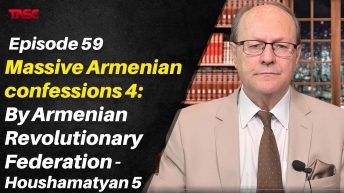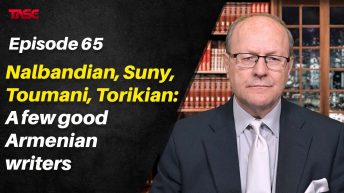Niles & Sutherland Report 1: Ignored Out of Bias, Buried, Then Forgotten At the end of WWI, the political scenery concerning the Ottoman Empire’s geography was complex. Prof S. Shaw described it well in his book History of the Ottoman Empire and Modern Turkey, Volume II, (see pages 330-331): “…As the PARIS PEACE CONFERENCE began to meet in January 1919, various plans were put forward to partition what was left of the Ottoman Empire, with only conflicts of interest among the victors rather than consideration of the national rights of the defeated delaying a settlement…Greece had entered the war only at the last minute, and in return for Allied promises, which had been limited due to Italian interests in southeastern Anatolia and those of Britain in Istanbul…” Britain supported the Greeks because of the strong anti-Muslim sentiment at home and also to hinder in the Aegean any future Russian move. “…The Armenians demanded full independence for their own state which would stretch from the Black Sea to Mediterranean as a reward for their… contributions to the allies mainly in the service of the Russians… The Kurds, Georgians, and Azerbaijanis disputed other parts of the Armenian claims along with the Turks, who had substantial majorities of the population in the entire area… The Armenian delegations strove to get Allied support for a plan to forbid the return of any Turks or Kurds to Eastern Anatolia and to replace then with Armenian refugees so as to create an Armenian majority…” The US had not been involved in the wartime treaties and was not bound by them, as President Wilson stated in his 14 points. His insistence on self-determination conflicted with all the claims being made at the peace conference, with the exception only of those of the Arabs and the Turks. The Armenians in the US mounted waged a campaign to force Pres Wilson to abandon his principles and support the Armenian cause at the conference…Wilson sent two investigative commissions to the Middle East: one to Syria (Henry C. King and Charles Crane) and one to Anatolia (Major General James G. Harbord.) The King-Crane Commission toured Syria and Palestine in July and August 1919, concluding that almost all the Arab inhabitants wanted an independent and united Arab state, but if that could not be achieved, they preferred a mandate controlled by the US of the UK. The Harbord Commission toured Anatolia in the same summer. Its report issued in October 1919, found that most of the existing population was, indeed, Turkish and recommended that a single mandate be established over the entire area, including the Caucasus. But there was a third official investigation which was ignored out of bias, buried in files not directly related, and eventually forgotten: that of CAPTAIN EMORY H. NILES AND MR. ARTHUR E. SUTHERLAND JR. PROF JUSTIN MCCARTHY discovered it in 1990 in the US National Archives. It was a survey of eastern Anatolia in the summer of 1919. Their account is one of the first descriptions of this region by outside observers after WW I. However, the document was missing the field notes, which the authors emphasized should be read in conjunction with their report. Some 20 years after that revelation, in 2010, two copies, one carbon copy of the other, of NILES AND SUTHERLAND’S FIELD NOTES have been found in the archives of the former American Board of Commissioners for Foreign Missions (ABCFM) in Istanbul, by another American historian, BRIAN JOHNSON. His paper was published in a peer-reviewed journal: Americans Investigating Anatolia: The 1919 Field Notes of Emory Niles and Arthur Sutherland, Brian Johnson, The Journal of Turkish Studies, 34, II, 2010, 129-147. A pdf version is available on the internet. What NILES AND SUTHERLAND saw in Van, ironically, were refined cruelties and massacres committed by Armenians on Muslims. This was not exactly what the politicians, activists, and media in the US wanted to hear. That may be the reason why this report was ignored, hidden, and forgotten. Luckily, it is still accessible in the US National Archives (184.021/175) and the accompanying trip notes in ARIT, the American Research Institute of Turkey located in Istanbul. General Harbord misrepresented NILES AND SUTHERLAND REPORT’s findings in his own report, presumably due to anti-Turkish prejudice. NILES AND SUTHERLAND N&S recounted that most of the suffering was Muslim suffering and American relief was needed most by Muslims. The Armenians, who remained in occupation of the country after the Russians retired in 1917 after the Tsar was overthrown in Russia, applied a scorched earth policy to kill every Musulman in sight and destroy every Musulman property in their path. The Armenians committed murder, rape, arson, and horrible atrocities of every description upon the Musulman population. All this carnage was ignored in America…and the rest of the West.SHOW LESS
Myths and Realities




Add comment